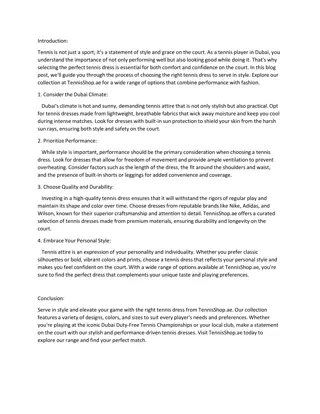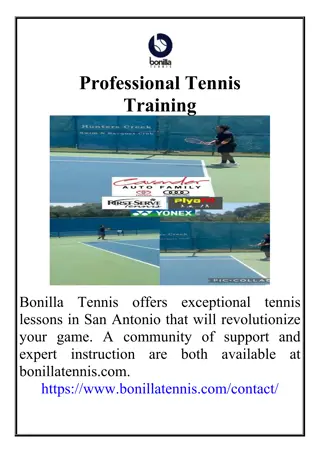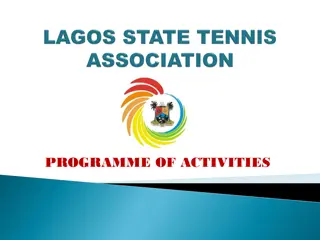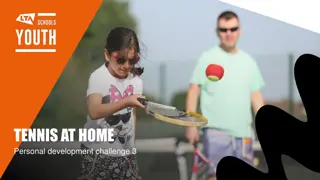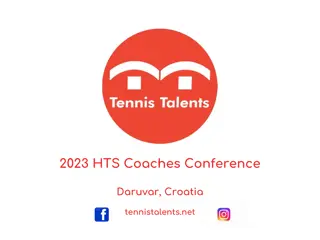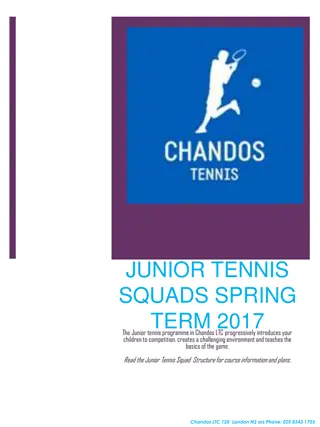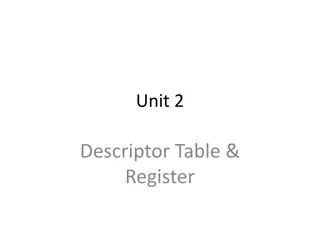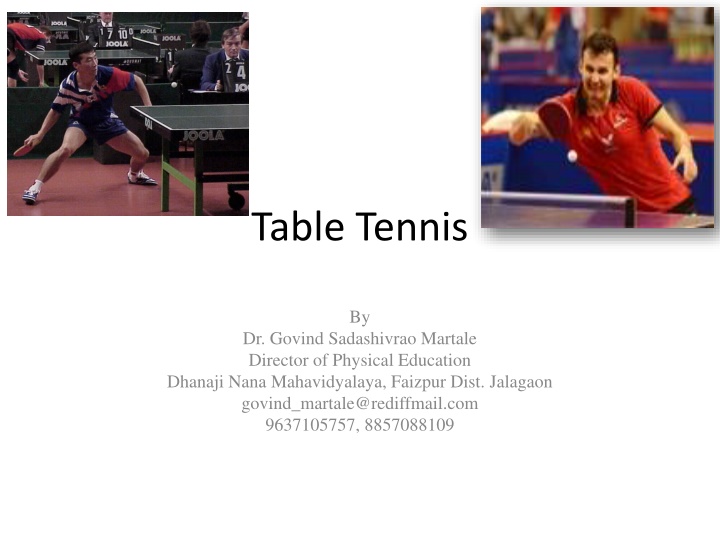
Fascinating World of Table Tennis: History, Equipment, Skills
Dive into the captivating realm of table tennis with an exploration of its rich history dating back to the 1880s, detailed equipment specifications including the ball, racket, and table, and essential skills like service, return, smash, cut, and spin. Discover the nuances of this dynamic sport governed by the International Table Tennis Federation (ITTF) and enjoyed by players worldwide.
Download Presentation

Please find below an Image/Link to download the presentation.
The content on the website is provided AS IS for your information and personal use only. It may not be sold, licensed, or shared on other websites without obtaining consent from the author. If you encounter any issues during the download, it is possible that the publisher has removed the file from their server.
You are allowed to download the files provided on this website for personal or commercial use, subject to the condition that they are used lawfully. All files are the property of their respective owners.
The content on the website is provided AS IS for your information and personal use only. It may not be sold, licensed, or shared on other websites without obtaining consent from the author.
E N D
Presentation Transcript
Table Tennis By Dr. Govind Sadashivrao Martale Director of Physical Education Dhanaji Nana Mahavidyalaya, Faizpur Dist. Jalagaon govind_martale@rediffmail.com 9637105757, 8857088109
Introduction This is name of Ping pong. Is a sport in which two or four players hit The game takes place on a hard table divided by a net Highest governing body International Table Tennis Federation(ITTF)
History 1880s First match played Unofficial world championship was held in 1902 In 1921, the table tennis Association was founded, and in 1926 renamed International Table Tennis federation (ITTF), founded in 1926 London hosted the first official World Championships in 1926 The table tennis official rules are specified in the ITTF handbook Table Tennis included in Olympic in 1988 After the Sydney Olympic, the ITTF instituted several rule changes Currently includes 226 country
Equipments Ball Racket Table
Ball The International rules specify that the game is played with a sphere having a mass of 2.7 grams (0.095 oz) and a diameter of 40 millimeters (1.57 in). The rules say that the ball shall bounce up 24 -26 cm (9.4 10.2 in) when dropped from a height of 30.5 cm (12.0 in) onto a standard steel block thereby having a coefficient of restitution of 0.89 to 0.92.
Racket According to the ITTF regulations, at lest 85% of the blade by thickness shall be of natural wood. Common wood types include balsa, limba, cypress or hinoki The average size of the blade is about 17 centimeters (6.7 in) long and 15 centimeters (5.9 in) wide.
Table The table is 2.74 m (9.0 ft) long, 1.525 m (5.0 ft) wide, and 76 cm (2.5 ft) height with any continuous material so long as the table yields a uniform bounce of about 23 cm (9.1 in) when a standard ball is dropped onto it from a height of 30 cm (11.8 in), or about 77%. The table or playing surface is uniformly dark colored and matte, divided in to two halves by a net at 15.25 cm (6.0 in) in height.
Skills Service Return Smash Cut Spin
Game Single Double
Let A let is a rally of which the result is not scored. A Let is also called foul service, if the ball hits the server s side of the table, if the ball does not pass further than the edge and if the ball hits the table edge and hits the net.
Doubles game Croce court service Order of play, serving and receiving (example: -A X B Y) http://upload.wikimedia.org/wikipedia/commons/thumb/7/78/Service_en_double_%28tennis_de_table%29.svg/220px-Service_en_double_%28tennis_de_table%29.svg.png
Grip of Racket Shake hand grip: - 1) Forehand 2) Backhand Chinese grip (Pen hold): - 1) Forehand 2) Backhand
Type of strokes Offensive strokes 1. Hit 2. Loop 3. Counter hit 4. Flip 5. Smash
Defensive Strokes 1. Push 2. Chop 3. Block 4. Lob
Mean Skill of Table Tennis of Spin Back Spin Top spin Side spin Cork Spin
Scoring point is scored by the player for any of several results of the rally. Opponent fails to make a correct service or return. After making a service or a return, the ball touches anything other than the net assembly before being struck by the opponent. The ball passes over the player's court or beyond his end line without touching his court, after being struck by the opponent. The opponent obstructs the ball. The opponent strikes the ball twice successively. Note that the hand that is holding the racket counts as part of the racket and that making a good return off one's hand or fingers is allowed. It is not a fault if the ball accidentally hits one's hand or fingers and then subsequently hits the racket. The opponent strikes the ball with a side of the racket blade whose surface is not covered with rubber. The opponent moves the playing surface or touches the net assembly. The opponent's free hand touches the playing surface. As a receiver under the expedite system, completing 13 returns in a rally. The opponent has been warned by umpire commits a second offense in the same individual match or team match. If the third offence happens, 2 points will be given to the player. If the individual match or the team match has not ended, any unused penalty points can be transferred to the next game of that match. A game shall be won by the player first scoring 11 points unless both players score 10 points, when the game shall be won by the first player subsequently gaining a lead of 2 points. A match shall consist of the best of any odd number of games. In competition play, matches are typically best of five or seven games.

